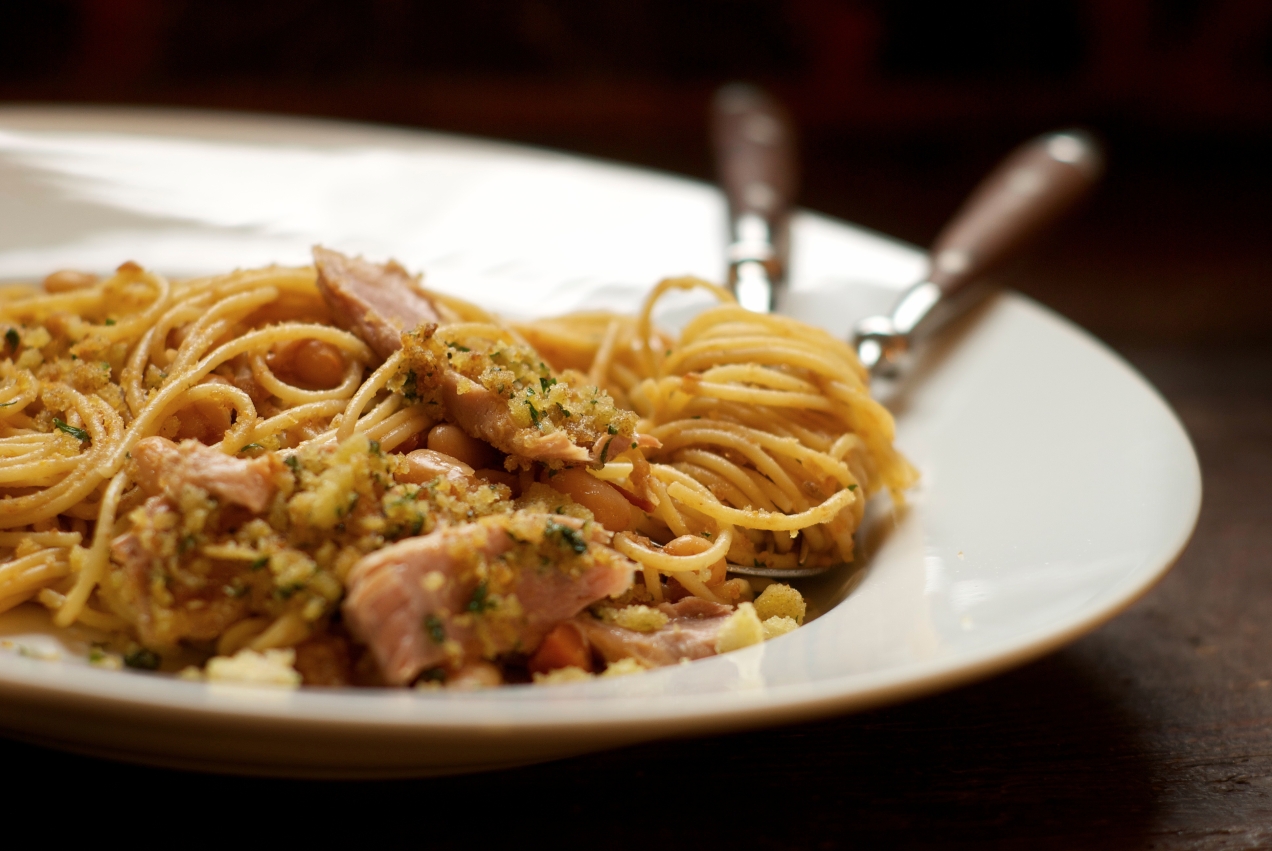
Hachis Parmentier
One of the things I like best about the French dish Hachis Pamentier is the looseness of the recipe. Unlike Shepard’s Pie which connotates lamb as the central ingredient Hachis Parmentier quite often simply lists chopped meat and then leaves it to your discretion. So anything on hand, usually cooked, usually leftovers which is generally combined with Sauce Lyonnaise.. Then add potatoes, again, mashed, leftover bakers or boiled, pretty much anything you can crush with a fork.
In my book anything Lyonnaise is good and more likely great. The reality, though, of most classic French sauces is, who has demi-glace on hand and who is going to make it for this dish? Not many home cooks do, nor should they. So if you take the base ingredients of the sauce minus the demi-glace you have a vinegar based dressing. In other words something to cut into the richness of the meat and potatoes and a simple balsamic dressing does this just fine.
The reason I chose salmon for this version is it doesn’t need to be cooked before hand. You can put it right into the ring molds raw to be cooked in the oven. Salmon has enough natural collagen that it will bind on its own, no mayonnaise, no egg, no nothing.
What I have tried to do here, and I think with great success, is make a family style dish into something worthy of a fancy sit down dinner and even the main course to a dinner party. You can make the individual servings ahead of time (hint: my ring molds are water chestnut cans with both ends removed, cheap and simple) by putting the molds onto a parchment lined sheet tray, then layering them with the ingredients, covering them and storing them in the fridge.
On the other hand, you needn’t invite anyone for dinner to make this dish it is just as delicious for two as ten and if you want family style just chuck the whole ring mold idea and use a large gratin.
Serves 4
1 pound salmon, skin removed and cubed into 1/4 inch chunks
1/2 cup celery, finely minced
1 teaspoon capers, minced
1/2 teaspoon lemon zest, finely zested
1 teaspoon dill, minced
1 teaspoon chives, minced
1/2 cup comte or Gruyère cheese, grated
3 potatoes, sliced into 1/8 inch or thinner rounds
1 cup milk
1 teaspoon garlic, minced
water
kosher salt and fresh ground pepper
a handful of arugula leaves, rinsed and dried
1/2 teaspoon Dijon
1 teaspoon balsamic vinegar
1 1/2 tablespoons olive oil
1. Place the potatoes, garlic and milk into a medium size pot. Add enough water to cover the potatoes by an inch. Add a teaspoon of salt and a few grinds of pepper. Place the pot over medium heat and slowly bring it to a boil. Cook the potatoes until just tender, being especially careful not to cook them to mush but if you do don’t get you undies in a bundle they will still cook and taste the same. Drain the potatoes.
2. If you plan to cook the dish now heat the oven to 375˚ F.
3. Place the salmon, celery, capers, lemon zest, dill and chives into a mixing bowl. Add 3/4 teaspoon of salt and some fresh ground white pepper and mix the salmon being sure to incorporate all the ingredients and evenly distribute them throughout.
4. Place a piece of parchment paper onto a sheet tray. Place four ring molds onto the tray. Lightly butter the interior walls of the molds and then divide the salmon mixture into four equal portions and pat firmly/gently it into the molds.
5. Taste a potato testing for salt content. Take the potato slices and fan them into the top of each mold making two to three layers. If the potatoes were salty enough when you tasted them then don’t season them anymore but if the need it season each layer with a pinch of salt and pepper. Top with a little cheese and a spritz of olive oil. Bake in the heated oven for 25 to 30 minutes.
6. While the salmon is baking combine the mustard and balsamic adding a pinch of salt and a grind or two of pepper. Then add the oil and mix to combine.
7. When the salmon is done remove it from the oven. Using a spatula and a dry towel remove each mold to a plate placing it in the center. Using a paring knife run it around the edges to loosen the salmon. Gently hold down on the potatoes with a spoon as you lift the mold.
8. Toss the arugula with the dressing and top each hachis parmentier with a bit of greens. Serve with a crisp fruity white wine.
























